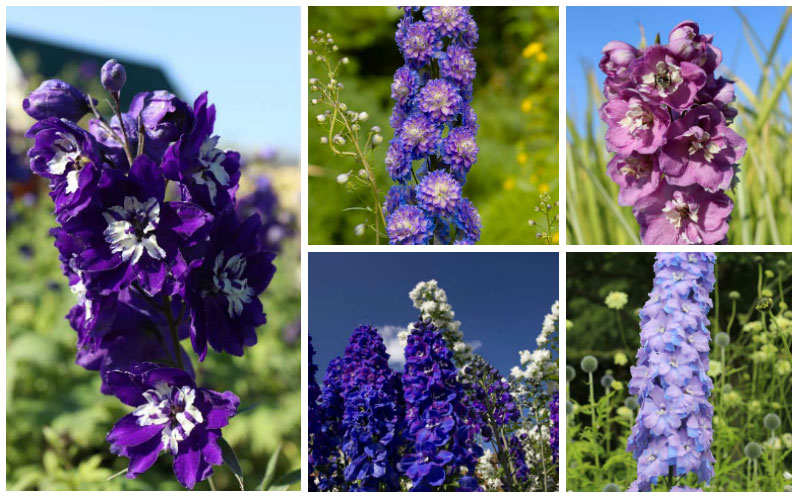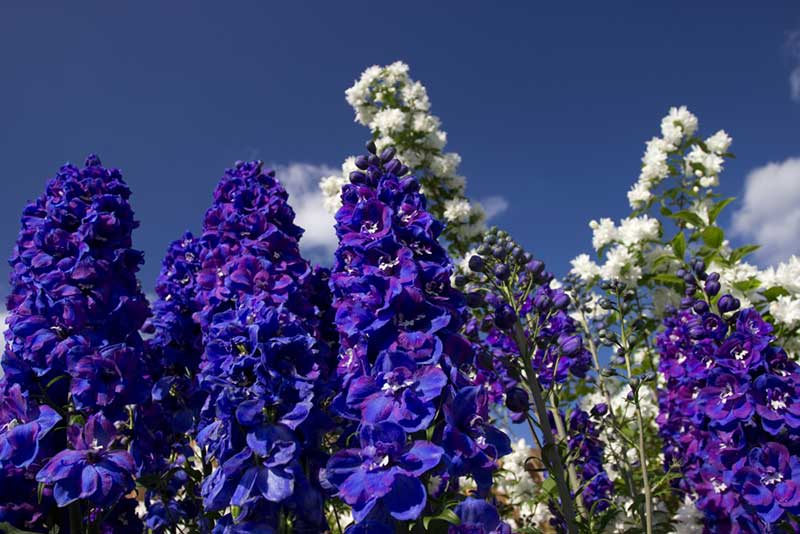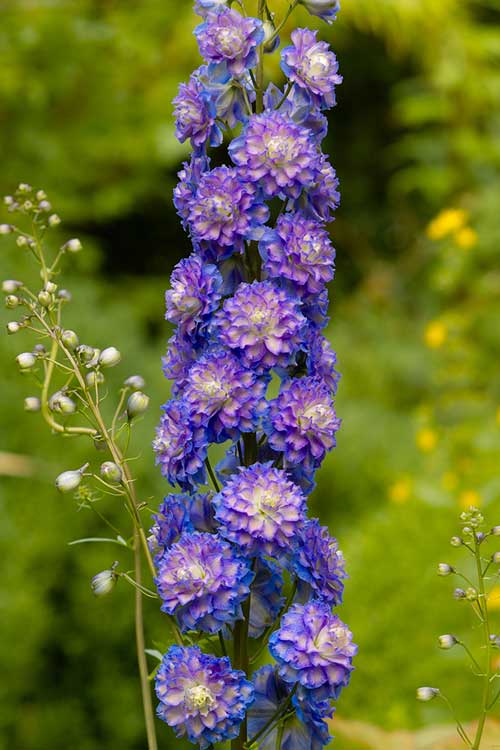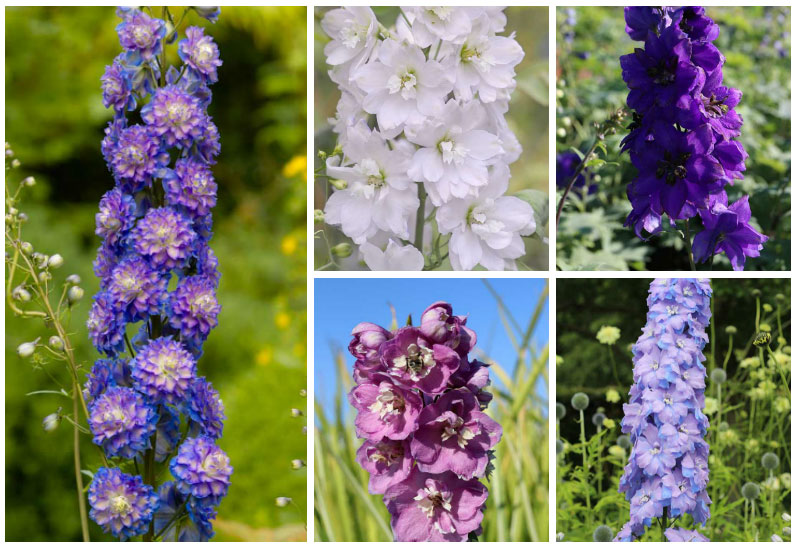
Often called larkspur, this flower is easy to grow in zones 3 to 7. There are over 300 types available, so you can easily find one or more that you will love instantly.
While most delphiniums are blue or lavender, you can also find pink and white varieties of this sun-loving plant. Most will grow to be about 4-feet tall, but you can find dwarf options that stay under 12-inches tall and some that will grow to be about 10-feet tall.
Delphiniums are easy to grow if you keep some common points in mind.
Light and Temperature Requirements
These flowers do best when they are planted in full sun, except in the South, where they need some afternoon shade. They also do best when temperatures stay moderate during the summer.
Watering
Delphiniums prefer the soil to stay moist, but not soggy. They also do not want the soil to completely dry out as their drought tolerance is not very high. You should always water at the plant’s base as watering from the top can make it more suspectable to diseases. They need about 1 inch of water per week.

Soil
Plant your delphinium plants in fertile soil. They are heavy feeders, so mix in lots of organic matter. Mixing in organic matter also helps the ground to drain better. Furthermore, you should plant your delphiniums in an area where they are protected from strong winds.
Fertilizer
Delphiniums are heavy feeders, so you should plant them in organic matter. If you have an existing delphinium bed, apply 2-to-3 inches of compost in the late winter before these plants poke their heads through the ground. Then, use a slow-release fertilizer when you notice them growing. Every two to three weeks while they are blooming, feed them with a balanced fertilizer or fish-emulsion fertilizer.
Pruning
Cut or pull the first flowers off your plants as soon as they start to fade. This will encourage the plant to put on new blooms faster and more abundantly. Cut the vines back to the ground after the first killing frost. Every two-to-three years, dig up your delphiniums just as they are starting to grow in the spring. Then, divide the roots into two-or-three bundles and replant. Discard the center spent bulb.
Propagation
The best time to propagate delphinium is in the early spring when the shoots are about 3-inches long. Use a knife to dig down in the ground and get some of the brown base material when propagating your plant. Put your cutting in water as soon as you cut it. Then, pot it as quickly as possible. Add some rooting hormone to the pot. It is essential to keep your newly planted delphinium in a cool, humid place until it has started growing strong roots. At about one month, move the plants to a larger pot where they will have plenty of room to grow over the summer. Finally, put the plant in the ground in the fall.

Diseases and Pests
While delphiniums are generally healthy plants that you can grow easily, it is important to watch for some diseases and pests that can harm your plants.
The first one is root rot, and you should prevent this one before it gets started by planting your plants in an area that drains well. If you have questions about how well an area will drain, then incorporate some gravel into the soil before planting your flowers. While you should cover your plants with organic matter in the fall, leave holes so that melting snow and water does not stand directly over the flower’s bulb.
Powderly mildew can also occur on delphiniums. Prevention is usually the best idea when possible, so be sure that you are watering your flowers from the roots, preferably with a soaker hose, and not overhead. If you live in a humid environment, then it can still be a problem. If you notice that your flower’s leaves are wilting, use a sulfur-based fungicide.
Another disease that you need to watch for is black leaf spots. Usually, these spots are caused by cyclamen mites. Treat with an insecticidal soap twice a week until you see no more signs that the mites are present.
You can grow delphiniums easily in well-drained soil in sunny locations. Many gardeners report that their delphiniums grow too tall and heavy with flowers. If this is a problem, then stalk your flowers and keep enjoying their blooms until fall.





